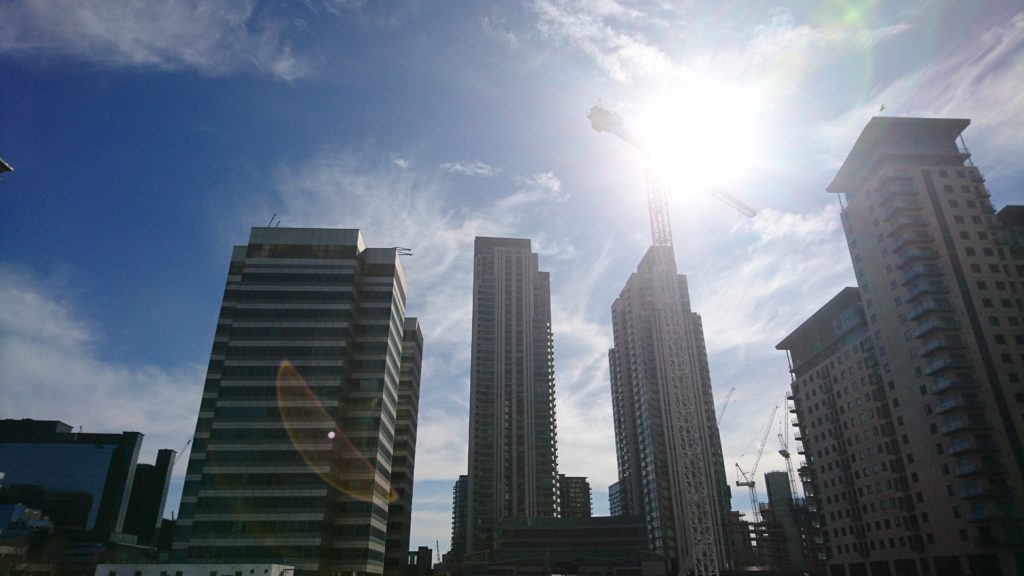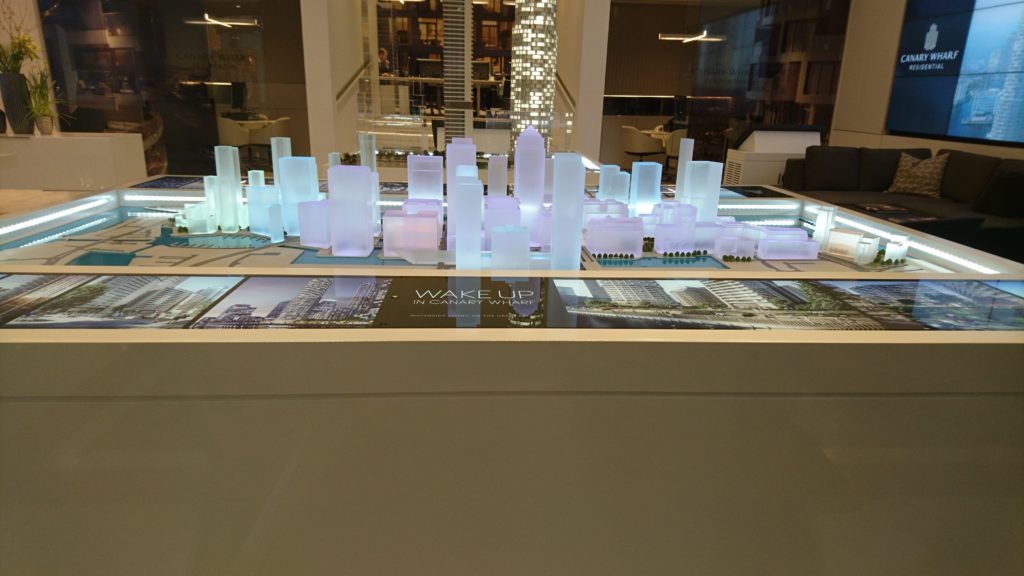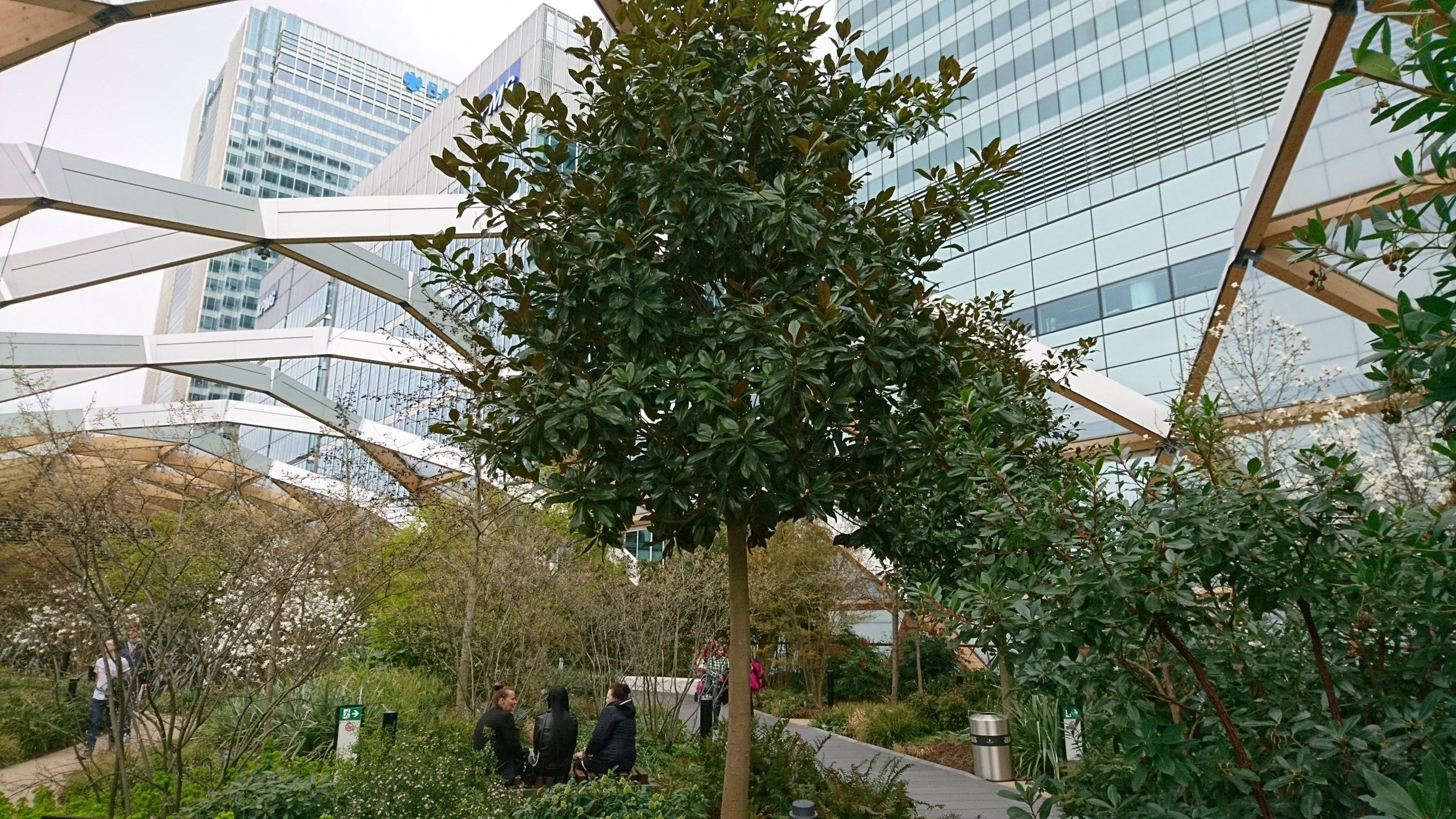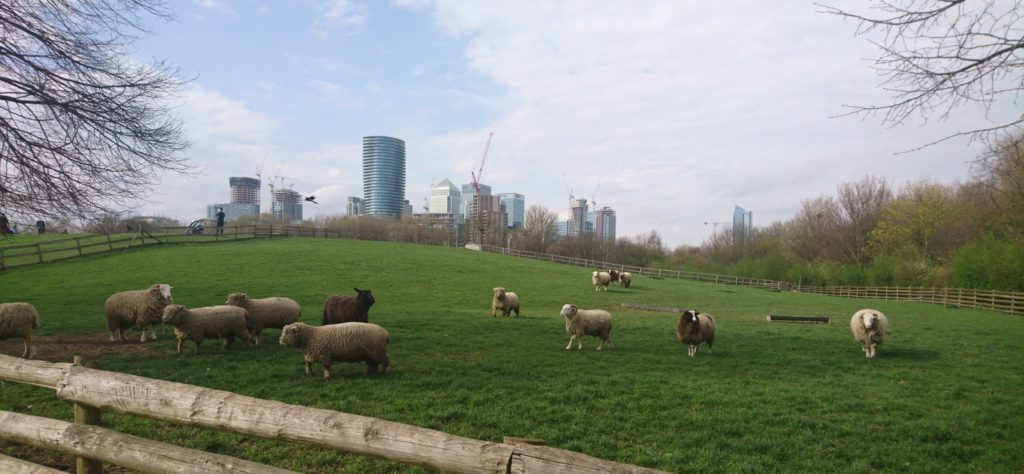London: What’s the Deal with Canary Wharf?
Once an industrial area, Canary Wharf has turned into the most important financial hub of the UK over the last decades. With the ever growing presence of skyscrapers in the neighbourhood, the atmosphere of Canary Wharf has something futuristic and cold – but is this postmodern postcode in the east of London worth a visit?
A very brief history: for nearly two centuries, Canary Wharf was part of one of the biggest ports of the world. After the second World War, the industry declined and the harbour was relocated further from the ever growing city of London. A new destination plan was formed for the area and shortly after Thatcher’s reign came to an end, a 235-meter-high building named One Canada Square – at the time the highest on the whole British Island – was completed.

Even though it has gotten company from over a dozen of skyscrapers, its famous pyramid hat can still be seen from all around the city. The architecture of the area is definitely one of the best excuses to visit Canary Wharf, as the experience to be dwarfed by these massive buildings of concrete, glass and steel humbles the viewer. The latest additions to the skyline are the Baltimore tower, with its feminine forms and luxurious balconies, and the One Park Drive, divided in three sections with different squares forming circles.
Around 100.000 people work in Canary Wharf and most of the aforementioned skyscrapers are filled with offices. The logos of multinationals shine on the tops of some of the buildings and when the main tube and DLR stations are visited on the weekend, there is an eerie calmness that indicates this area is dead. Yet, if you wander off a bit further you will find that not all buildings are for offices or foreign investors and the area has plenty of residents, growing in numbers. A lot is being done to make the neighbourhood feel more lively, although the modern approach makes it feel somewhat forced.

Next to the standard library and cinema that can be found in any neighbourhood, the Canary Wharf district is equipped with not one but two marinas. Walking along the docks can be relaxing and there are loads of tiny squares all well maintained throughout the area. There is a museum in the former storage buildings, surrounded by terraces on the dockside. Underneath all this wealth with its modern parks and restaurants is a shopping mall with all the big chains, where the personnel always seems to have a bit more patience than other big malls in the city.
There are plenty of subtle decorations to make the surroundings a bit more attractive and Canary Wharf has more and more seasonal events. In the winter, there is an ice rink where people can pretend to be able to skate, and in the late summer there is an annual lights festival with oeuvres from worldwide artists scattered through the area.

One of the nicest spots is a semi-indoor garden juxtaposing its surroundings: Crossrail Place Roof Garden. On top of the soon-to-be Crossrail/Elizabeth line station, it is a tiny calm oasis in the competitive consumerism life of the 21st century. After ascending the escalators in the building, it suddenly feels like strolling through a park in Victorian ages – but then with a backdrop of the high rises. The Roof Garden also contains a market with lots of drink and food stands, but be aware that these are – god knows why – closed in the weekend.
If you want to be even more alienated and experience an even bigger clash between man and machine, there is a gem that mirages the rural in the suburban. You only have to walk for ten minutes from the marina and visit Mudchute Farm, where you can feed and caress the lama’s and sheep with the skyline as a backdrop.



